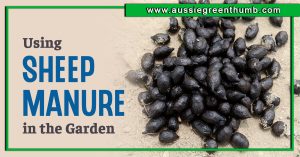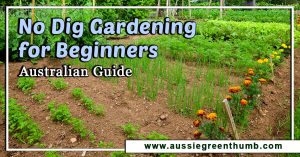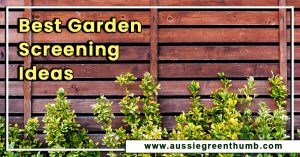Many gardeners have sustainability in mind. Growing the food you eat, after all, is a big step to living a sustainable way of life. Compared to non-organic methods, organic methods are definitely more sustainable, not only for human health, but also for wildlife, the water, and the soil.
Sustainable gardening, however, goes beyond the use of organic techniques. From energy and water conservation to the reduction of waste, there are so many ways to make our gardening practices more sustainable.
More...
Sustainable Gardening in Australia
There are so many sustainable gardening tips you can follow, and below are just a few of them. These tips are broken down according to category.
The Reuse and Recycling of Materials Used in the Garden
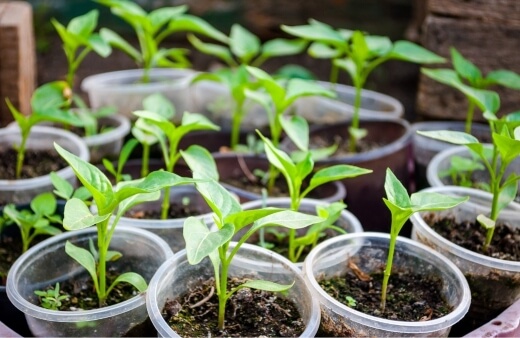
One great thing you can do is to recycle plastic drink cups by using them to grow seedlings. Once they are ready for transplanting, you need to take out the bottom inch of every cup using a cutter or a knife before having them planted directly to the ground. This way, you still allow plants to grow while preventing cutworm infestation.
Protect plants against the cold of winter by having old windows propped against straw bales. You can also get used bean poles and place them into the end parts of the beds.
Then put old sheets over them before placing bricks or stones to hold the edges down. This will serve as a tent for your plants.
Instead of throwing old pantyhose away, use them to tie different elements of the garden instead. For example, you can use them to support melons so they do not fall from trellises.
All you need to do is to expand them sideways. Then place the middle portion of the pantyhose under the fruit before tying the ends together on one portion of the trellises.
Zero Waste Gardening
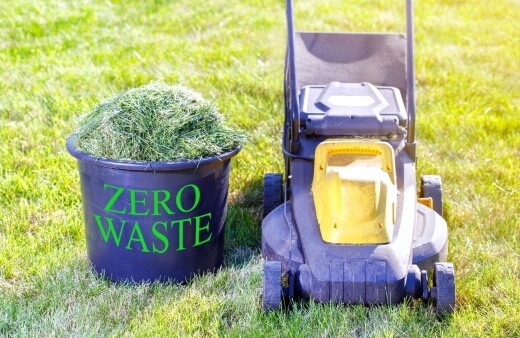
In general, you need to make it a point to avoid burning or discarding clippings, brush, and leftover vegetables. Not only are you wasting a valuable resource you can use in the garden, you are also contributing to the problem of air pollution.
How are these a valuable resource for use in the garden, you ask?
Below are some of the ways you can use them.
1. Creating mulch
The aforementioned materials are two important components you need to create mulch. In creating mulch, the first thing you need to do is to determine the amount needed to cover flowerbeds.
Keep in mind that most mulch has to be inches deep. Then set aside one part of the yard for the pile of mulch. Be sure that no bulbs or shrubs are underneath it, as these might wither and die.
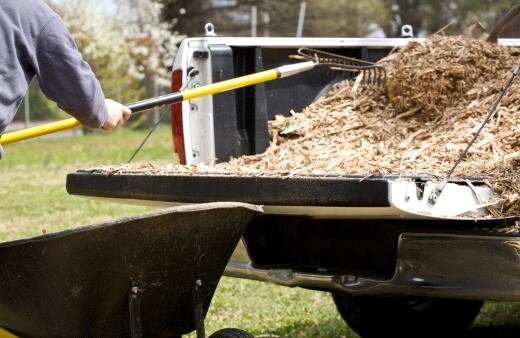
Start creating the mulch pile during fall. Gather fallen leaves, brush, and clippings and run these under a lawn mower for mulching to chop these up. Continue chopping leaves as they fall and add them to your pile.
The same should also be done with fallen tree branches, except that you should cut them to pieces using a chainsaw and a wood chipper.
To use mulch, all you need to do is place them on the flowerbeds once you have placed the seeds you want to grow in the garden and watered them well.
2. Creating compost
Compost is made using the combination of dry leaves and grass clippings or old plants. The green ingredients have a lot of nitrogen while the brown ingredients have a lot of carbon.
Thus, make sure to avoid adding too many green ingredients so the pile will not smell very bad. The compost mixture should only be made up of two parts brown materials with one part green materials.
Also, make sure that the pile has a volume of three cubic feet or more. This is because compost piles of such volumes break down and heat up faster.
The next step is to kick-start the process of decomposition by covering the pile with garden soil. You can also have the pile covered with finished compost that you bought from the store.
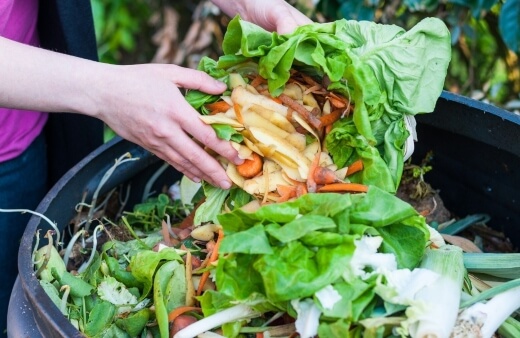
Remember that compost should have the right amount of moisture in order to decompose. Too much moisture causes the pile to smell bad, while too little moisture causes the decomposition rate to slow down.
To check if the moisture in the pile is just right, feel it with your hands or feet. A pile that has the correct level of moisture should feel damp and spongy. Increase moisture by adding water and decrease moisture by adding more brown ingredients.
Never forget to turn the contents of your pile every week for two months to prevent the compacting of the pile. Compacting reduces the flow of air and slows down the process of decomposition.
The compost pile is ready for use if it does not heat up any longer, if you can no longer identify the materials you used, and if it is moist, dark brown, and smells like the earth.
To use your newly-made compost, all you have to do is to mix it well with garden soil in an area you intend to use for planting. Take note that partially-decomposed plants in the compost pit can also be used as mulch, if needed.
To help you ease your composting project, here is our review on the best compost bins in Australia for 2023.
Energy and Water Conservation
One good way to conserve utilities is to make small ditches between rows of plants to direct water right to them. The ditches do not have to be created out of tough materials.
In fact, you can make long furrows using the soil near the plant rows to ensure that water gets to them. Just make sure to properly plan out where the furrows and plants should be, though.
A second way is to use your hands or a garden hoe instead of a machine when weeding. This not only helps you save electricity, as this also works some of the muscles in your body.
Harvesting Rainwater
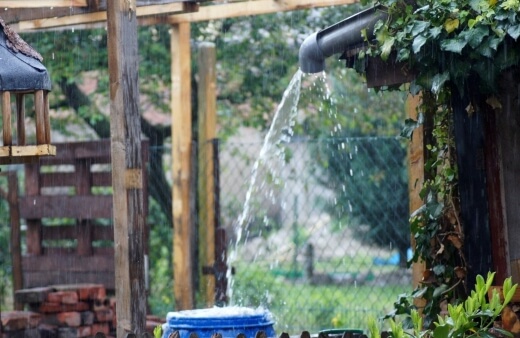
Rainwater can be used for watering your plants. The establishment of a rainwater harvesting system is the third of the many ways to reduce the consumption of natural resources while providing water for garden use.
The process of harvesting rainwater is quite complex, and the many steps to this process are given below.
- The first thing you need to do is to build a platform using lumber or bricks. You can use any method in building your platform so long as it is large enough, is stable, and does not break easily. This way, the container does not fall. Make sure to position the platform under the downspout.
- Put the container on top of the platform and have it set under the downspout. With the use of a marker, mark the downspout below where the upper edge meets the container.
After doing this, take the container down and cut the downspout at the marked part. - Using a marker, trace a hole on the container lid that is a bit bigger than the diameter of the downspout. Once you have traced a circle, cut it using a reliable tool like a sharp knife.
- Then put your container back to the platform and place the downspout into the hole you made. To secure the spout in place and prevent mosquitoes from breeding, apply PVC cement at the part where the container meets the spout and let it dry.
- Using the same sharp tool you used to create the hole on the lid, create a hole on the side of your container. Make sure that it is big enough for either a tap or a pipe, depending on how you plan on using the rainwater.
If you are planning to live off the grid permanently, you may need to install a pump along with a number of pipes leading to different parts of your plumbing system.
This way, the rainwater will be distributed evenly in your home. Of course, a big tank should be used instead of a barrel. For more information, here is our guide on rainwater tanks.
Also read: What Is a Rain Garden and How Does It Work?
10 Must-Grow Plants for a Self-Sustainable Garden
When you have unlimited resources and enough space to fling a Mack truck it doesn't matter what you grow. Even if you're trying to escape the supermarkets and remain self-sustainable, unlimited resources allows you to be frivolous with your choices and grow any plant you like.
However, confine yourself to a suburban backyard and the options become very limited. No longer can you grow every exotic fruit or experiment with boutique vegetables. It now comes down to finding the most appropriate plants that will supply your needs throughout the year and limiting your choices to just those ones.
So, if you were given the task of restricting your choice to just 10 plants, what would they be? Here's my 10 MUST grows for a suburban self-sustainable garden.
1. Lemon/ Lime Tree
Ok, this one may border on the luxury end of the choice scale but when it comes to flavouring and preserving other foods, acidic limes are one of the best options you could grow. Plus, if you had a surplus, you could always make lemonade or churn out your own marmalade.
Check out our detailed guide to growing lemon trees for everything you'll need to know.
2. Apple Tree
This is your source of winter fruit. If you're not into apples, you could always grow pears or even mandarins. The beauty of an apple tree is that it produces abundantly and can easily be espaliered against a boundary fence to minimize space. A good apple tree can keep you in fruit for most of the cooler months.
3. Peach/Nectarine Tree
Then there's the summer fruit to consider. You could opt for a berry vine instead but for the sheer amount of fruit that producers offer, it would be hard not to choose at least one. Not into peaches or nectarines? Then you could choose from apricots, plums or even loquats.
4. Cabbages
A winter-growing vegetable. Cabbages are a great storing vegetable with a superb shelf-life. If you grow too much they can always be pickled and stored as sauerkraut.
5. Tomatoes
Tomatoes are the best fruit/veg that the self-sustainable gardener could grow. Not only do they taste great during the summer months, but you can easily produce enough to can, bottle, or freeze for the cooler months.
Here's our top tips for growing tomatoes along with the best varieties to grow in Australia.
6. Potatoes
The ultimate carbohydrate vegetable can be grown for at least nine months of the year and produce brilliant harvests. Potatoes, like cabbages, have a great shelf-life and provided they're kept in a cool, dry yet dark location should be able to keep you in stock for most of the year.
7. Beans
With the range of beans available you can have these growing for almost six months of the year as well (depending on your climate). Beans are a great vegetable that lend themselves easily to being blanched and frozen for the winter months.
8. Carrots
The ultimate all-rounder vegetable that will grow as a continual crop. Carrots can be grown at any time but if your area is too cold to support them during winter then they can be blanched and frozen like beans.
9. Lettuce
While mostly considered as a summer vegetable, lettuce can also be grown indoors in a small hydroponic setup that gives you year-round supply. It's a great vegetable, especially the many new varieties that avail themselves to be picked indiscriminately and still continue growing.
10. Onions
The final choice in this list. I would have said garlic if I had another option but we're trying to limit ourselves here. Onions are a great option for the home self-sustainable garden. They store really well making them available in the off season and are great producers. Plus, like lemons, onions are a great flavouring for many dishes and are useful in pickling and preserving other vegetables.
Could that list satisfy you and your family? Or would you need to embellish it with a few more choices or even replace some the ones I've mentioned.
Start Sustainable Gardening Today
Given above are the most important sustainable gardening methods. Following these tips not only ensures you that you have food to eat, it also assures you that the food you eat is healthful.
Not only that, you help save the environment in the process of growing your own food!
Published on August 27, 2021 by Jim Horton
Last Updated on January 6, 2024

